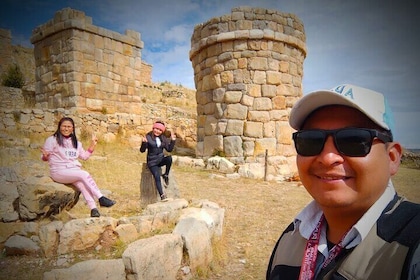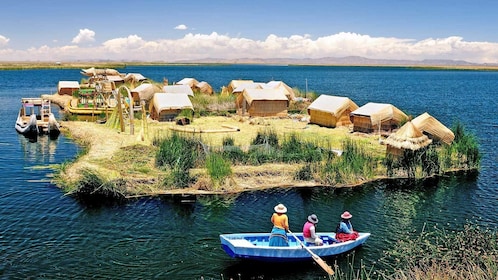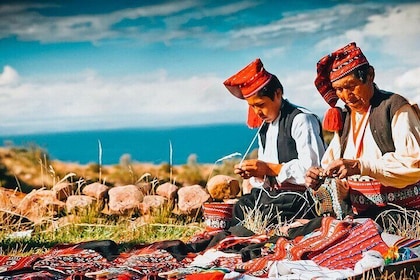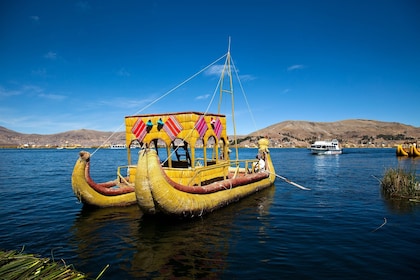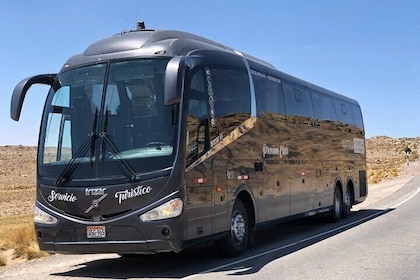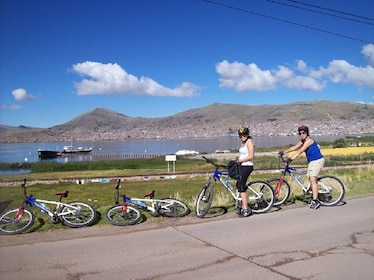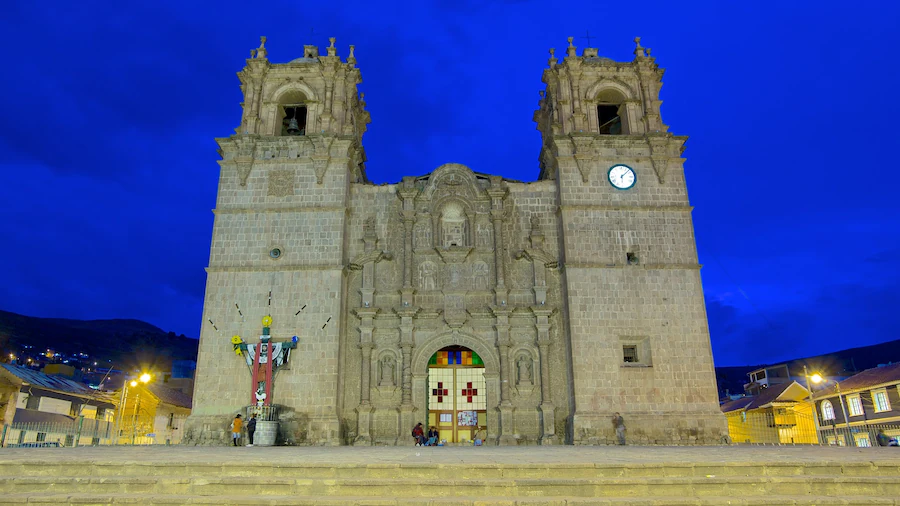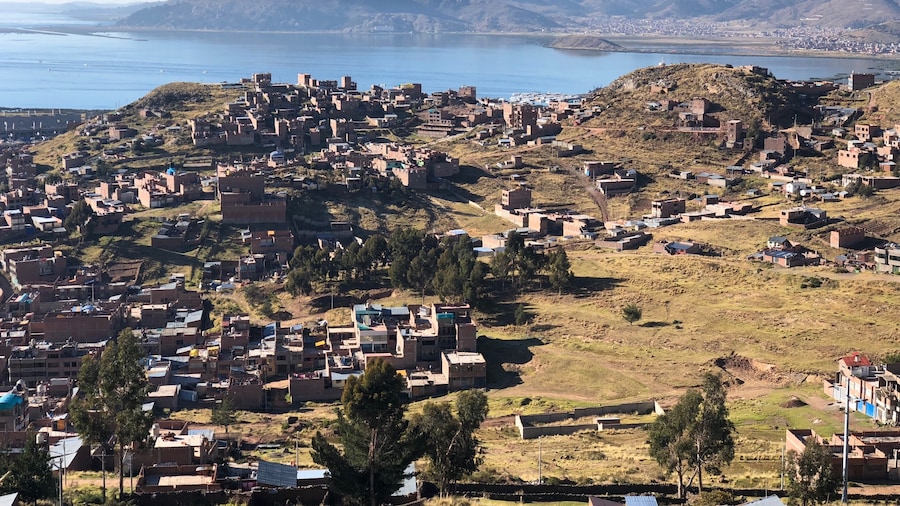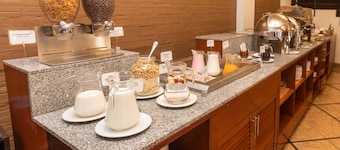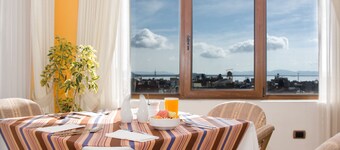Visit Puno’s main square, which forms the historic religious and social hub of “Peru's folkloric capital"on the shores of Lake Titicaca.
As with all Spanish colonial Peruvian cities, Puno’s Plaza de Armas is centrally located and its church steps are the perfect place to meet the locals at the start of your explorations of the Puno region. Get a taste of the Aymara and Quechua cultures that make this lakeside city so unique and relax in its green heart.
The Puno Cathedral with its intricate façade, is the focal point of the Plaza de Armas. This Catholic house of worship in Baroque style shows a mix of Andean and Spanish design and was built in 1757. In front of the cathedral, look up at the statue of Don Francisco Bolognesi, a colonel during the Peruvian-Chilean war.
The Plaza de Armas in its current layout dates back to 1901. Apart from the cathedral, the Plaza de Armas is also flanked by the modest Casa del Corregidor, the colorful Palacio de Justicia and modern-looking government buildings.
For a break from sightseeing, take a seat on the cathedral steps or find a bench in the square’s green space and practice your Spanish by chatting to the locals.
If you are lucky, you can attend a traditional music and dance festival in the square or see religious processions. As “Peru's folkloric capital,” Puno has no shortage of big celebrations. The Festival of Our Lady of Candelaria, for example, is a colorful spectacle that takes place each February.
Calle Lima, the city’s pedestrian shopping street, leads directly to the Plaza de Armas, which means you can easily reach the square on foot. Otherwise, take public transportation, rent a taxi, squeeze into a shared taxi van, called colectivo, or get there by mototaxi (a kind of tuk tuk).
Just four blocks behind this main square is Cerrito de Huajsapata, a small hill adorned by the statue of Manco Cápac, founder of the Inca Empire. From there, look out over Puno and the deep-blue waters of Lake Titicaca, the star attraction of the Puno region.







